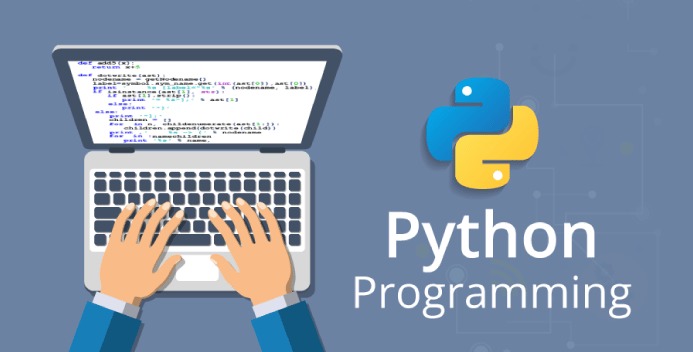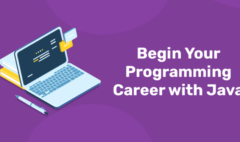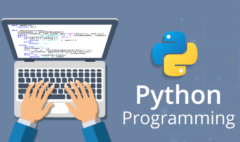Which are the 8 most popular kids coding languages in 2022 ?
Which are the 8 most popular kids coding languages in 2022 ?
We bring you leading coding languages for kids and beginner programmers in 2022. These are perfect for introducing them to the world of computer science
Which are the top 10 programming languages for kids in 2022? With the world becoming more dependent on fast-evolving technology and computer science continuing to be among the most lucrative professions in the world, learning coding is no less than a life skill today. Kids, grownups – we all need to learn coding and no, it doesn’t have to be that difficult either. The best way to start is to begin with the simplest and work your way up. And while adults too can learn coding
But yes, in an increasingly competitive world, coding basics will definitely help one have an edge over others. The question then is: which programming language must one start with? Rather which coding language is an ideal start for kids?
In this blog we bring you the top programming languages for kids in 2022. They have been mentioned below as per their rank:
1. Scratch 3.0

Scratch is a visual programming language and online community targeted mainly at children, by coding with ‘blocks’ in the editor. Users of Scratch can create online projects using a block-like interface; it is the first on our list because it is easy to understand for kids and beginners.
Developed by the MIT Media Lab, Scratch is thus an event-driven, block-based programming language that has been translated into 70+ languages, and is used in most parts of the world. It is used as an introductory language because creating interesting programs using Scratch is fairly easy, and skills learned in Scratch can be applied to other basic programming languages such as Python and Java. Learning Scratch allows kids to think like programmers and get a better understanding of key coding concepts, which in turn makes learning other coding languages a lot easier. Learning coding languages is often a sequential process and not necessarily a parallel process, so learning Scratch is the ideal way to get started. In fact, many leading educational institutions endorse this. A case in point is the programming language Snap!, which is heavily influenced by Scratch and has been used to teach The Beauty and Joy of Computing introductory course in computer science (CS) for non-CS-major students at UC Berkeley. Thus, Scratch is quite popular in after-school centers, schools and colleges.
Moreover, it has a very interactive online community where people share their artwork and games with each other; community statistics on Scratch’s official website state that more than 35 million projects have been shared as of October 2018. It’s an ideal choice for younger children given that kids can create animations, interactive stories, art or music using sequencing, input, output, branching, looping and variables under Scratch. For more information, visit https://scratch.mit.edu/.
2. Python

Python is a programming language that is very similar to normal speech. One doesn’t have to add many comments to the code because Python code – if well written – can just do the job without extra comments. It is the closest to English and therefore not at all intimidating. In fact, with Python one can build projects just by doing functional programming. This means there is no need to use objects and classes at the beginning, which makes it nowhere as overwhelming as other programming languages can be for beginners. So if you want your kids to learn coding, Python is a great starting point as it will offer your kid a basic understanding of how programming generally works. With Python, students can develop programming ideas and then convert these ideas into instructions that the machine can interpret. It’s an easy coding language to learn mainly because several common functionalities that programmers need are already built into this programming language. In fact, Python provides constructs that enable clear programming on both small and large scales. Also, it features a dynamic type system and automatic memory management. It supports multiple programming paradigms, including object-oriented, imperative, functional and procedural, and has a large and comprehensive standard library; plus Python interpreters are available for many operating systems. CPython, the reference implementation of Python, is an open source software and has a community-based development model, just as most of Python’s other implementations. Using Python, a lot can be achieved by simply researching and using the core Python libraries.
Not surprising to see then that it is the most popular programming language and is used by leading companies and startups around the world. In fact, the multi-purpose language of Python is used today in the fields of Data Science, Artificial Intelligence, Machine Learning, Web development, Internet of Things (IoT) and more. For more information, visit https://www.python.org/.
3. Hypertext Markup Language (HTML) / Cascading Style Sheets (CSS)

Learning HTML / CSS is certainly a good way to get introduced to programming as it lends the student a sense of accomplishment on having learnt languages that form an important part of most programming concepts (along with JavaScript). Both are easy to learn and use and are also very useful for kids who wish to pursue web designing. Bear in mind that almost every browser supports the HTML language; it is by default in every computer with Windows OS, so you don’t need to purchase any extra software to work with this programming language. HTML elements are denoted by tags, written using angle brackets. At the same time, it must be pointed out that HTML/ CSS do not really teach the student concepts such as looping or branching and they are thus not ideal for making dynamic pages. With HTML/ CSS, it’s more about learning to make tags for different things on a web page and learning how to perform tasks such as making a Word document colorful. Indeed, HTML can use a wide range of colors, objects and layouts. One of the biggest advantages of learning HTML is that it can embed programs written in JavaScript, which affects the behavior and content of web pages. Knowing CSS is helpful as it helps define the look and layout of content on these pages. For more information, visit https://html.spec.whatwg.org/ and https://www.w3.org/TR/CSS/#css.
4. JavaScript

JavaScript is just the programming language for kids who are interested in web development and design and wish to learn the basics of programming. An object-oriented and procedural programming language (which means its actions are carried out on the user’s computer) that’s used for front-end or client-facing applications, JavaScript is indeed a popular programming language. It is, in fact, native on all web browsers and commonly used to create complex interactive web applications. Along with HTML and CSS, JavaScript is one of the three core technologies of the World Wide Web. What’s more, these days JavaScript engines are also being used to run software such as web servers, databases, desktop widgets and non-web programs such as word processors and PDF software. Learning this language typically gives quick tangible results, in other words, the student actually sees something on the web page and how it is being put together. For more information, visit http://www.ecma-international.org/.
5. Dart

Developed by Google, Dart is an object-oriented, class defined programming language. Like Go, it is a garbage-collected language using a C-style syntax. Supporting interfaces, mixins, abstract classes and a sound type system, Dart is used to build web, server, desktop, and mobile applications. In fact, Flutter, the open-source mobile application development framework created by Google to develop Android and iOS apps, is written in Dart. This language is AOT (Ahead Of Time) compiled to fast, predictable, native code and because it has features that are familiar to users of both static and dynamic languages, it is quite easy to learn. Also, with Dart, it is easier to make smooth animations and transitions that run at 60fps (frames per second). For more information, visit https://dart.dev/.
6. C#

C# is your best bet if your kid wants to learn how to make 3D games. Pronounced “see sharp”, C# was developed around the year 2000 by Microsoft. It is a hugely popular programming language that’s used to develop most third-party applications for Windows. It’s certainly an in-demand programming language when it comes to software programming jobs, and is a great starting point for people who have never learnt coding. With a syntax similar to that of Java, C# is easier to learn if you have worked with the former language. C# can be used to make web applications, video games, and other programs. It’s ideal for students who are interested in making applications for Windows. Some of its advantages include a strong memory backup, automatic garbage collection and rich class libraries. For more information, visit https://docs.microsoft.com/en-us/dotnet/csharp/.
7. C++
Pronounced “see plus plus,” C++ is used to create applications that run locally on machines such as your computer. Despite the time and complexity required to learn C++, this language gives teens a very deep understanding of programming, it is referred to as the foundation which several other programming languages have been built on. C++ can be used to create systems software, games, and a variety of other programs. This is why C++ is great for teenagers who are seeking a complex understanding of programming principles and for students wanting to program in the gaming industry. Knowledge of C++ will surely strengthen the student’s resume; programmers who know C++ are always in great demand. For more information, visit https://isocpp.org/.
8. Java

With around 90 percent of Fortune 500 companies being said to use it, Java is a widely used programming language in the world. Be it SAP, traffic management or even a day-to-day appliance such as a refrigerator, it is clearly popular among systems that have been built over a long period of time and will thus continue to stay relevant for quite some time. That said, new tech products are less likely to use Java, which is why a lot of the newer programming languages are in greater demand today. For instance, Java is used to make Android mobile apps, large backend environments and game engines, but many Android apps today are being made using Kotlin programming language and not just using Java. This is because Kotlin has been designed to interoperate fully with Java.
Also, for those who have never learnt or worked with an object-oriented programming language before, Java can be rather tricky. This is because unlike many programming languages, learning to code in Java needs one to have a prior understanding of concepts such as objects, classes, inheritance, interfaces and packages. So while progression is much simpler in Python and doesn’t need an understanding of the above mentioned concepts, working on projects using Java needs one to have a good command over them. This means it can take longer to study and work with Java than with other languages. For more information, visit https://www.oracle.com/java/.
In addition to the above coding languages, there are a few more that deserve a mention. For instance, Kotlin is a statically typed, cross-platform, general-purpose programming language with type inference. Designed to interoperate fully with Java, the JVM version of Kotlin’s standard library relies on the Java Class Library, even as the type inference lets its syntax be more concise. Since 2019, Kotlin has been the preferred language for Android app developers at Google; a fact that has added to the increasing popularity of the language. Moreover, the past few years have seen Kotlin get included as an alternative to the standard Java compiler. You can find more info here: https://kotlinlang.org/.
Another popular programming language is PHP, a general-purpose scripting language tailored for web development. Originally created by Danish-Canadian programmer Rasmus Lerdorf in 1994, PHP was originally short for Personal Home Page, but it now stands for PHP: Hypertext Preprocessor. Today, PHP can be used for programming tasks not just inside the web context, but also outside it; think standalone graphical applications and robotic drone control. A W3Techs report from April 2021 shares that PHP was used by 79.2% of all the websites whose server-side programming language were surveyed by them. For more info, one can visit: https://www.php.net/.
R is a free coding language and software environment for statistical computing and graphics. Supported by the R Foundation for Statistical Computing, R is popular among statisticians and data miners for data analysis and for developing statistical software; it runs on many platforms, including GNU/Linux, Macintosh, and Microsoft Windows. Not only is it useful for managing and manipulating data, it also boasts impressive graphical capabilities. Add to this the fact that it is an open source software and has been reviewed by many internationally renowned statisticians and computational scientists, and you see why the demand for R has shot up. More information can be found at: https://www.r-project.org/.
An interpreted, high-level, general-purpose programming language that supports multiple programming paradigms, Ruby was developed in the mid-1990s by Yukihiro Matz Matsumoto in Japan. Known for being dynamically typed and using garbage collection and just-in-time compilation, it has been designed with a strong focus on programming productivity and simplicity; in Ruby, everything is an object, including primitive data types. It supports multiple programming paradigms, including procedural, object-oriented, and functional programming. For more info, visit: https://www.ruby-lang.org/en/.
Swift is a general-purpose, multi-paradigm, compiled programming language developed by Apple and designed to work with their Cocoa and Cocoa Touch frameworks and the existing Objective-C code written for Apple products. Apple launched Swift Playgrounds in 2016 as a tool to teach kids to code. Essentially an iPad app, it has many basic coding lessons and gamified challenges, and has a tight interface with graphically pleasing backgrounds. This makes Swift Playground a good choice for schools where students use iPads. Also with Apple building Augmented Reality (AR) enabled apps with Swift Playgrounds, this programming language has a lot of potential. More info can be found at: https://www.swift.org/.









